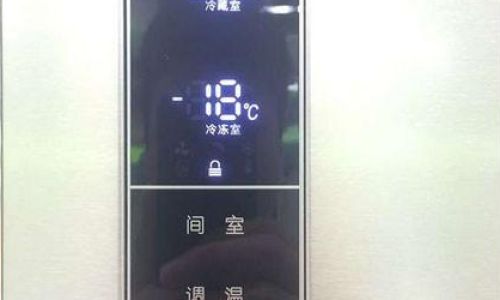The question of whether a refrigerator freezer can generate steam is both intriguing and rooted in fundamental principles of thermodynamics, humidity, and appliance design. To address this query, we must dissect the physics of steam formation, the operational mechanics of refrigeration systems, and the environmental conditions within a freezer compartment. This article will explore these topics in depth, clarifying misconceptions and providing a definitive answer backed by scientific reasoning.
Understanding Steam and Its Formation
Steam, in scientific terms, refers to water in its gaseous state, typically formed when water is heated to its boiling point (100°C or 212°F at standard atmospheric pressure). However, steam can also exist at lower temperatures under specific conditions, such as reduced atmospheric pressure. Visible steam, often mistaken for “water vapor,” is actually tiny water droplets suspended in the air—a phenomenon known as condensation. This occurs when warm, moist air comes into contact with a surface or environment colder than the air’s dew point, causing the vapor to condense into visible droplets.
The Refrigeration Cycle: How Freezers Work
To determine if a freezer can generate steam, we must first understand how refrigeration systems operate. A typical refrigerator or freezer uses a vapor-compression cycle to remove heat from its interior. The process involves four key components:
- Compressor: Pressurizes refrigerant gas, raising its temperature.
- Condenser Coils: Release heat from the refrigerant to the external environment.
- Expansion Valve: Reduces refrigerant pressure, cooling it significantly.
- Evaporator Coils: Absorb heat from the freezer compartment, lowering its temperature.
In a freezer, temperatures typically range from -18°C to -23°C (0°F to -10°F). At these extremes, water vapor present in the air freezes into frost or ice, adhering to evaporator coils and the freezer’s interior surfaces. The dry, cold environment inside a freezer is inhospitable to liquid water, let alone steam.

Humidity and Moisture in Freezers
Humidity, the amount of water vapor in the air, plays a critical role in steam formation. Freezers are designed to operate in low-humidity conditions. When warm, moisture-laden air enters the freezer (e.g., when the door is opened), the sudden temperature drop causes the water vapor to condense and freeze rapidly. This results in frost buildup, not steam. Over time, repeated door openings can lead to ice accumulation, which modern freezers mitigate with automatic defrost cycles.
Debunking the Myth: Can Freezers Produce Steam?
The short answer is no. A freezer’s internal environment is too cold and dry to sustain the conditions required for steam generation. However, certain scenarios might create illusions of steam:
- Defrost Cycles: Some freezers periodically warm their evaporator coils to melt frost. During this process, moisture from melting ice may briefly increase humidity, but temperatures remain far below boiling, so no steam forms.
- Hot Food Placement: Introducing hot, steaming food into a freezer can cause localized condensation. The warm air from the food may contact cold surfaces, creating temporary fog or droplets. This is not steam generated by the freezer but rather moisture from the food interacting with the cold environment.
- Door Openings: Opening the freezer door allows warm, humid air to enter. As this air cools rapidly, water vapor condenses into tiny droplets, creating a mist-like appearance. This is condensation, not steam.
Thermodynamic Constraints: Why Steam Is Impossible in Freezers
Steam formation requires two conditions: sufficient heat to vaporize water and an environment capable of sustaining gaseous water. Freezers fail on both counts:
- Temperature: Freezers operate below 0°C, far below water’s boiling point. Even if water were somehow introduced at higher temperatures, it would freeze, not vaporize.
- Pressure: Steam can exist at lower temperatures under reduced pressure (e.g., in a vacuum). However, freezers are not sealed vacuum chambers; they maintain near-atmospheric pressure. Thus, pressure reduction is not a factor.
Practical Considerations: Frost, Ice, and Maintenance
While freezers cannot generate steam, they do manage moisture through frost formation and defrost mechanisms:
- Frost-Free Freezers: Modern units use fans and heating elements to periodically melt frost, draining water via a evaporator pan. This prevents ice buildup but does not involve steam.
- Manual Defrost Freezers: Older models require manual defrosting. Ice is removed by unplugging the unit and allowing it to thaw, producing liquid water—not steam.
- Seal Integrity: A damaged door gasket can allow warm air infiltration, increasing frost and condensation. Regular maintenance ensures efficient operation and minimizes moisture-related issues.
Common Misconceptions and Scientific Clarifications
-
Misconception: “I saw steam when I opened my freezer.”
Reality: What appears as steam is likely condensation or frost sublimation (ice turning directly into vapor without becoming liquid). Sublimation occurs in very dry conditions but does not produce visible steam. -
Misconception: “Freezers with ice makers produce steam.”
Reality: Ice makers freeze water into cubes. Any moisture released is from melting ice, not steam. -
Misconception: “Steam cleans freezers.”
Reality: Some guides suggest using steam cleaners for defrosting, but this is external to the freezer’s operation and risks damaging internal components.
The Role of Ambient Conditions
External factors can influence freezer moisture levels:
- High Humidity Environments: In areas with high outdoor humidity, opening the freezer door allows more moisture to enter, increasing frost buildup.
- Temperature Fluctuations: Frequent door openings in warm kitchens exacerbate condensation.
- Load Capacity: Overloading a freezer restricts airflow, leading to uneven cooling and potential frost pockets.
Historical Context: Early Refrigeration and Steam
Early refrigeration systems, such as iceboxes, relied on blocks of ice to cool contents. These units occasionally produced condensation but never steam. The transition to electric compressors in the early 20th century solidified the modern freezer’s design, emphasizing low temperatures and dry storage.
Industrial and Laboratory Freezers: Edge Cases
Specialized freezers, such as ultra-low temperature units (-80°C), are even drier and colder than household models. These units use liquid nitrogen or cascade refrigeration systems and are entirely devoid of conditions conducive to steam.
Conclusion: The Final Verdict
In conclusion, a refrigerator freezer cannot generate steam under normal operating conditions. The extreme cold and dryness of the freezer environment prevent water from reaching the temperatures or pressures required for vaporization. While certain actions, such as opening the door or defrosting, may create temporary condensation or frost, these phenomena are distinct from steam. Understanding the science behind refrigeration and humidity clarifies this common misconception, emphasizing the importance of proper appliance use and maintenance to optimize performance and longevity.
Practical Takeaways for Consumers
- Minimize Door Openings: Reduce warm air infiltration to lower frost buildup.
- Check Door Seals: Ensure a tight seal to maintain internal temperatures.
- Avoid Overloading: Allow airflow to prevent uneven cooling.
- Defrost Regularly: Manual defrost models require periodic ice removal to prevent inefficiency.
By adhering to these practices, users can maintain their freezers’ efficiency while dispelling myths about steam generation. The absence of steam in freezers is a testament to the precision of refrigeration engineering, designed to preserve food through cold, not through the unlikely production of gaseous water.






0 comments